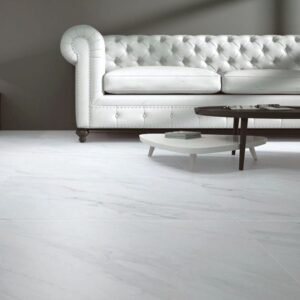
 When we step into a home, the first contact we make is with the floor.
When we step into a home, the first contact we make is with the floor.
It supports every movement, anchors every wall, and silently bears witness to the rhythm of daily life.
Yet, in the rush to choose wall colours, furniture, or lighting, flooring is often treated as a mere design element, a matter of convenience and cost.
In the ancient science of architecture, Vasthu Sastra, however, the floor is far more than that.
It represents an essential element, the Earth, which symbolises stability, support, and grounding.
The energy that flows through a house begins here, from the ground beneath our feet.
In Vasthu philosophy, the quality of the floor reflects the quality of life its occupants experience.
A smooth, level, and bright floor allows energy to move freely, creating harmony and well-being.
Conversely, a cracked, uneven, or dark floor traps energy, symbolising instability or heaviness in the household.
The ancients were keenly aware that our surroundings mirror our state of mind. A house that is solidly grounded generates inner steadiness, just as an uneven base creates subtle restlessness.
Among all flooring materials, marble has long been the preferred choice in Vasthu-compliant homes.
Beyond its natural elegance, marble possesses qualities that harmonise both the physical and spiritual aspects of dwelling.
It is considered pure, uplifting, and serene. Walking on marble gives a sense of coolness and calm, ideal for tropical climates where temperatures soar.
This natural cooling effect is not merely physical; it also soothes the mind and emotions, helping the inhabitants feel more balanced and composed.
Places of worship and sacred spaces across the world often use marble not only for its durability but for its vibrational purity.
The reflective surface of white marble is believed to magnify positive energy and spiritual vibrations.
It embodies light, clarity, and expansion, qualities that encourage purity of thought and harmony in relationships.
Homes with marble flooring often exude a quiet grace, an understated grandeur that transcends time.
Tiles, while practical and cost-effective, do not carry the same energetic resonance as natural stone.
Most tiles are synthetic or chemically processed, and their vibration is considered lacking in the ability to move, in Vasthu terms.
They may serve a functional purpose, but lack the subtle life force that natural materials radiate.
Glossy, overly reflective tiles can also cause energy to scatter, leading to restlessness rather than calmness.
That said, modern living often demands a balance between tradition and practicality.
High-quality vitrified or ceramic tiles in soft, earthy tones can still align reasonably well with Vasthu principles, provided the design is simple, the colours are soothing, and the surface is even.
For those who cannot install marble due to budget constraints, light-toned tiles with a matte finish offer a reasonable compromise.
The colors of the floor also play a vital role in shaping a home’s atmosphere.
Vasthu encourages the use of light, expansive colours that radiate calmness and invite light into the space.
Shades such as white, off-white, cream, beige, light yellow, and soft green are all favourable. They make the interiors feel more open and peaceful.
Dark like black, blue and grey or excessively bright colours, however, absorb energy and can make rooms feel heavy or agitated.
A black or deep red floor, for instance, is discouraged as it represents stagnation and conflict. Light tones, in contrast, invite serenity, helping to reflect the natural light that is so important for maintaining energetic flow within the home.
According to Vasthu, the flooring of a house mirrors the foundation of its residents’ lives.
Just as a firm and balanced floor offers physical stability, it symbolically strengthens one’s emotional and financial footing.
A home with an even floor, where no corner dips or rises disproportionately, reflects balance and harmony in the lives of those who dwell there.
The southwest should ideally be slightly higher than the northeast, symbolising strength and protection in one’s career and family life.
Cracked or chipped flooring is considered inauspicious. It is said to disturb the flow of energy and to reflect emotional fragmentation or financial strain.
Repairing or replacing damaged tiles or marble is not just an act of maintenance; it is a gesture of restoring energetic harmony to the household.
Some of the most common mistakes homeowners make include using different levels for rooms on the same floor, which can disrupt the natural flow of energy.
A lower southwest corner, for instance, can lead to instability and a loss of authority.
Another frequent oversight is leaving broken tiles unrepaired, assuming they are minor.
In Vasthu, even a small crack can symbolically represent instability. Using too many contrasting materials or loud colours can also create energetic confusion, much like noise in a peaceful space.
Overly glossy or slippery floors, though visually appealing, are discouraged as they cause energy to “slip away.”
Vasthu prefers matte or softly polished finishes that promote a sense of steadiness underfoot.
At its core, Vasthu teaches that beauty and balance are inseparable.
The floor beneath us is not just a surface to walk on; it is a silent witness to our lives.
Every echoed laughter, every prayer uttered, and every loved one’s footstep is grounded in its quiet strength.
It reminds us that what lies beneath matters most.
When the foundation is calm, balanced, and pure, everything built upon it, both the house and the life it shelters, stands steady and serene.
Award-winning writer Dr T. Selva is the author of the bestsellers Vasthu Sastra Guide and Secrets of Happy Living. To get a copy, WhatsApp 019-2728464. He can be reached at drtselvas@gmail.com. Facebook: Vasthu Sastra


